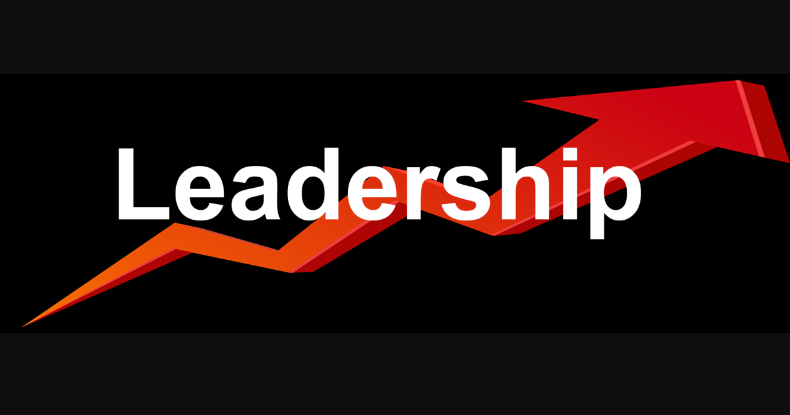When a More Qualified Person Arrives: Leadership Shift Dynamics

When a more qualified person arrives on scene, they may assume command or choose other options as agency guidelines permit. Their arrival does not guarantee an automatic change in command.
Navigating the complexities of incident management, the arrival of a more qualified individual on scene stirs immediate attention and potential shifts in authority. This person bears the weight of expertise and experience, often crucial in high-stakes environments. Their presence can bring fresh perspectives and strategies, especially when situations escalate beyond current leadership capabilities.
Such instances demand swift evaluation and possible reallocation of command roles, guided by a framework of predefined agency guidelines. These protocols are in place to ensure seamless transitions of command and maintenance of effective incident management without compromising the response efforts already underway. It’s vital to grasp that while authority may change hands, it is always a structured and considered process aimed at enhancing the overall response to an emergency or incident.
Contents
The Arrival’s Impact On Current Leadership
Leadership dynamics can shift dramatically with the arrival of a more qualified individual. This change often prompts a period of assessment and adjustment within an organization or team. Let’s dive into how immediate reactions unfold and what considerations come into play when evaluating leadership roles.
Immediate Reactions To A More Qualified Individual’s Presence
Surprise, concern, and curiosity typically mark the immediate response to a new, more qualified person’s presence. Team members may react in varying ways:
- Surprise at the arrival of an unexpected talent.
- Concern over potential shifts in roles and responsibilities.
- Curiosity about the new possibilities and expertise brought in.
It is crucial for current leadership to maintain composure and communication to ensure a smooth transition.
Assessing Competencies And Considering Leadership Change
When a more skilled person joins the team, current leaders must assess competencies. This involves:
- Evaluating the new individual’s skills and experience.
- Comparing them to existing leadership abilities.
- Discussing potential changes with all stakeholders.
Leadership may need to adapt. The team might witness a change in command or, alternatively, a collaborative approach where current leaders work closely with the new arrival to enhance the team’s performance.

Protocols For Leadership Transition
Protocols are the backbone of an organized leadership transition. These are the steps to follow:- Identify the qualifications of the incoming leader. Ensure they surpass current leadership.
- The current leader must be briefed about the changes. A transfer briefing is essential.
- Mutual agreement is key. Both parties must agree on the transition.
- Document the change. Keep records of the shift in leadership.
- Notify all team members. Clear communication prevents confusion.
- Hand over responsibilities. Ensure a complete transfer of tasks and duties.
Communication Strategies During Transition
Clear communication is vital during leadership transitions. Here’s how to keep everyone informed:- Start with a meeting. Involve key members from both the current and incoming leadership.
- Use plain language. Avoid jargon that could confuse team members.
- Be transparent. Share the reasons for the transition openly.
- Provide updates regularly. Keep the team informed at every stage.
- Support questions. Encourage team members to ask and clarify doubts.
- Use multiple channels. Emails, meetings, and notices ensure everyone gets the message.
The Role Of Agency Guidelines
How Agency Policies Dictate Command Transfer
Agency policies serve as a rulebook determining command transfer. When a person with higher qualifications comes on scene, leadership can shift according to these set rules. Command transfer isn’t automatic; it requires careful consideration and adherence to procedures to maintain order and effectiveness.- Assessment of qualifications: The newcomer’s skills and credentials are evaluated against the current situation.
- Communication: All involved parties must be informed about any potential change in command.
- Seamless Transition: Agency protocols ensure a smooth handover, minimizing disruption to ongoing operations.
Options Available To The Incoming Qualified Person
The incoming individual with higher qualifications has several options at their disposal. Decisions are made in line with agency guidelines and the incident’s needs.| Option | Description |
|---|---|
| Assuming Command | Taking over the role of the current Incident Commander if deemed necessary. |
| Maintaining Status Quo | Allowing the current Incident Commander to continue while providing support as needed. |
| Requesting Further Assistance | If needed, asking for another Incident Commander with more appropriate qualifications for the situation. |
Maintaining Unity And Morale During Shifting Leadership
In workplaces across the globe, leadership changes are inevitable, and with them come challenges that can disrupt team unity and morale. Leadership transitions, especially when a more qualified candidate steps in, need delicate handling. The key to maintaining a positive work environment and high team morale during these shifts lies in clear communication, successfully managing expectations, and implementing strategies to keep morale high.
Managing Team Expectations
When new leaders take charge, team expectations need management to maintain stability. Clear communication about changes and the new leader’s vision is essential. Here are key points to consider:
- Introduce the new leader and their qualifications.
- Outline the direction in which the new leader will steer the team.
- Clarify how these changes will affect individual roles.
- Be available to address concerns and questions promptly.
Strategies To Keep Morale High
To ensure a smooth transition and a positive team sentiment, several strategies can be applied:
- Empower team members by involving them in decision-making.
- Recognize and celebrate the team’s accomplishments.
- Organize team-building activities to foster connection with the new leader.
- Maintain transparency throughout the transition period.
Implementing these strategies will not only keep spirits high but will also reinforce the value of each team member during periods of change.
Long-term Effects Of Leadership Change
A shift in leadership can cause tidal waves within an organization, reaching far beyond the immediate aftermath. The arrival of a more qualified leader often triggers a cascade of changes. Over time, these changes can transform the entire landscape of a company. It’s not just about new policies or practices; it’s about a change in the organization’s soul. Let us delve into the long-term effects of leadership change and how they resonate through the corridors of power and down to the very foundation of the workplace.
Cultural Shifts In An Organization Post Transition
Every leader brings a unique culture. With a more qualified person at the helm, the organizational culture undergoes significant change. This can affect everything from work ethic to communication styles. Members might experience a shift in:
- Values: The priority of certain company values may rise or fall.
- Norms: What was once normal behavior may no longer be the case.
- Rituals: From daily routines to celebrated traditions, changes are bound to occur.
- Stories: The narratives that define the company’s history could be reinterpreted.
These cultural shifts can have an impact on the morale and productivity of the team.
The Impact On Efficiency And Decision-making
When a new leader steps in, decision-making processes often undergo refinement. A more qualified individual may introduce data-driven approaches and efficient workflow systems.
| Aspect | Before Transition | After Transition |
|---|---|---|
| Decision Speed | Slower due to less structured processes | Faster with clear, informed strategies |
| Risk Management | Reactive and less strategic | Proactive, with robust analytical tools |
| Resource Allocation | Often inefficient | Optimized based on performance metrics |
Efficiency leaps can stabilize an organization but also disrupt the status quo. This can lead to faster responses to market changes, placing the company on a better competitive edge.

Conclusion
Understanding the protocols for a more experienced individual arriving at a scene is crucial. Their arrival ignites a sequence of options to optimize response strategies. It ensures the most skilled hands guide critical decisions. Remember, qualifications shape outcomes. The right call could mean everything in emergencies.
This post has unpacked that key moment when expertise meets the unexpected. Stay informed; stay prepared.




